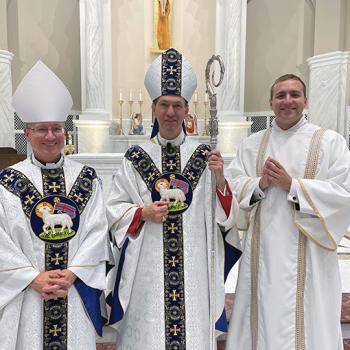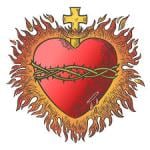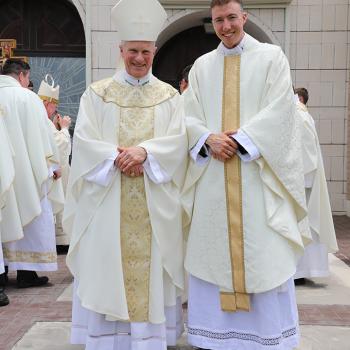As previously mentioned, the passage being reviewed is 1 John 1:1-10. The first four verses are the prologue and there is much theological significance to it. In verses one and two John tells us about the preexistence of Jesus. How he does this quite brilliant as he alludes to the opening in his Gospel, which is John 1:1[1]. John uses, according to the ESV, “that which was from the beginning” is not only similar to the Gospel that bears his name, but to the book of Genesis. Jesus, the eternal Son, always existed and did so before He was born of the Virgin Mary on Earth[2]. John doubles down on the idea of the preexistence of Christ in verse two where he discusses the eternal life, who was with the Father, became manifest mankind. There are some who say that the verbs used do not necessarily apply to Jesus because John does not name him explicitly. However, this is something that John does not do at the beginning.

1 John And John’s Gospel
In 1 John as well as his Gospel, he has a slow build. The first verse feels very general, but as you read on it is very apparent who John is discussing. The prologue in 1 John is no different. He is talking about the Lord Jesus Christ, who existed before all ages, and became man. Verse three relates back to verse one, and in a way completes John’s thought. In verse one John discusses the word of life that he heard, saw, and touched. If we stop reading there, we might wonder who or what this is, but John leaves no room for speculation in verse three[3]. He says that which we heard is Jesus, and we are telling you about him so you can have fellowship with him and us. Jesus is not only talking about a message, but he is the message and is God in the flesh[4]. This message is not meant to be kept in a close-knit group with secret knowledge as the Gnostics claim, but it is meant to be shared to the known world that the world may know the truth and have joy[5]. The truth will set you free, and the truth will bring ultimate joy. This joy is not in a thing, but in the person of Jesus.
Tackling False Christology
These statements about Jesus ran contrary to the Docetist and Gnostic views which were being spread. Matter was evil and there is no way that God would come in contact with the material, let alone the Son of God become man[6]. There is so much about who Jesus is in these first four verses that we owe it to ourselves, and to Christ, to study them.

With the eternal nature of Christ established, John moves on to the message of light and darkness. Jesus is light and in Jesus there is no darkness. Here we see an ethical dualism at play. This is something that would not have been lost on the recipients of the letter. This would have taken them back to the creation accounts in Genesis 1:1-5, 14-18[7]. In this account the Spirit of God was over the face of the deep, and in the Genesis 1:14-18 God created the Sun and moon to govern the day and the night. The defiance of the evil one, Satan, brought conflict. This conflict plays out everyday in our spiritual lives. However, walking in the light is emblematic of following the Lord and doing His will. Walking in the darkness is the opposite is perpetuating the rebellion that Satan had[8]. A theology of dualism was also a common trait in Gnostic and Docetic though at the time. It was the idea of two gods with one being good and the other evil[9]. The recipients of the letter would have noticed this play on words to, and John brilliantly points out that the light dispels the darkness. The Christian life is countercultural and a call out of the darkness into the light that Christ gives. This is in stark contrast to the other religions in the Asia Minor where the gods were just as human as the people and dabbled in darkness[10].
1 John And Fellowship With God
To have fellowship with God is to walk in the light. To make this claim and living a life of sin, a life where sin is the most important thing in our lives is to be a liar. It may be tempting for some to think that John is talking about something other than sin, but he makes it clear in verse seven that sin is exactly what he is talking about. Living a life of sin while claiming to walk in the light, i.e., being a Christian, is contradictory.
An interesting development occurs regarding sin and walking in the light when John pens verse eight. He writes, “If we say we have no sin, we deceive ourselves, and the truth is not in us” (ESV). On the surface there appears to be a contradiction between 1 John 1:6 and 1:8. However this is not the case as verse six is describing living a life of sin while claiming to walk in the light, and verse eight is denying that we sin. We are human and we have a fallen nature. We will sin, but there is a difference between sin and walking in sin. Walking in sin is a lifestyle and a Christian who sins will feel remorse, confess, and repent[11]. He will always forgive us for sin because He is faithful and has promised it. As soon as we ask for that forgiveness the sin is cast into the pit of the sea and forgotten. The grace of Christ is amazing, and this is a free gift. The last verse in the package is verse ten which says reminds us of our sinful nature. If we say we have not sinned, then we make Jesus into a liar because He came to die for sinners[12].
Works Cited
[1]. Constantine R. Campbell and Scot McKnight, 1, 2, and 3 John (Grand Rapids: HarperCollins Christian Publishing, 2017), 22.
[2]. John Stott, The Letters of John: An Introduction and Commentary (Downers Grove: InterVarsity Press, 2009), 65.
[3]. David L. Allen, 1-3 John: Fellowship in God’s Family (Wheaton, IL: Crossway, 2013), 18.
[4]. J. Scott Duvall and J. Daniel Hays, The Baker Illustrated Bible Background Commentary (Grand Rapids: Baker Academic, 2020), 1283.
[5]. David L. Allen, 1-3 John: Fellowship in God’s Family (Wheaton, IL: Crossway, 2013), 25.
[6]. David L. Allen, 1-3 John: Fellowship in God’s Family (Wheaton, IL: Crossway, 2013), 19.
[7]. Duvall and Hays, The Baker Illustrated Bible, 1284.
[8]. Ibid.
[9]. Abraham P. Bos, “‘Aristotelian’ and ‘Platonic’ Dualism in Hellenistic and Early Christian Philosophy and in Gnosticism,” Vigiliae Christianae 56, no. 3 (2002).
[10]. Duvall and Hays, The Baker Illustrated Bible, 1284.
[11]. Campbell and McKnight, 1, 2, And, 37.
[12]. John Christopher Thomas, “1 John,” in 1 John, 2 John, 3 John (Leiden, The Netherlands: Brill, 2011), 26.













